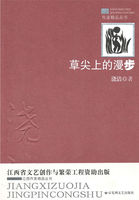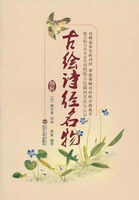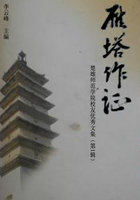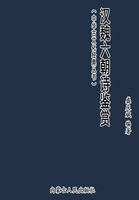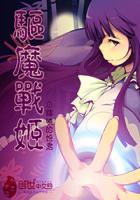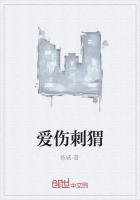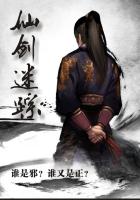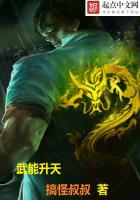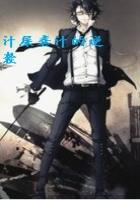Vonnegut in the Critical World:Controversy and Concurrence
Kurt Vonnegut(1922—2007)was one of the most important post-WW ⅡAmerican writers and an active public spokesman。In his literary career of ffty-seven years, he published fourteen novels, four plays, four short-story collections(two published posthumously in 2010 and 2011),six collections of essays, speeches, and interviews, and a large body of uncollected short fction and nonfction。A humorist in the strain of Mark Twain, Vonnegut made witty and incisive criticism about modern warfare, the reign of scientism, Eurocentrism, environmental destruction, and the degeneration of humanity as a whole。His novels and short stories were adapted to the screen as well as the stage。Many were long-standing New York Times bestsellers。They were taught in college courses and enjoyed tremendous popularity with the young people。For great lengths of his life, Vonnegut was vice president of the P。E。N American Center(since 1972),vice president of the National Institute of Arts and Letters(now the American Academy and Institute of Arts and Letters)(since 1973),and honorary president of the American Humanist Association(since 1992)。For his active engagement in public affairs, sharp critique of American culture and politics, and his unconventional innovation of artistic expression, Vonnegut had been widely acclaimed as one of the greatest American writers, an outspoken social critic, and an immensely influential cultural guru。
Even death did not put him into oblivion。 New studies on him continueto appear after his death。Harold Bloom's 2009 edition of Kurt Vonnegut in his“Modern Critical Views”,Peter Freese's monologue The Clown of Armageddon:The Novels of Kurt Vonnegut(2009),Jerome Klinkowitz's Kurt Vonnegut's America(2009),and Gilbert McInnis'Evolutionary Mythology in the Writings of Kurt Vonnegut(2010)are all examples of sustained enthusiasm in Vonnegut。In 2011 and 2012,the Library of America released two volumes of Kurt Vonnegut’s works, Kurt Vonnegut:Novels and Stories 1963—1973 and Kurt Vonnegut:Novels and Stories 1950—1962.A third volume is to follow。It is an important sign of offcial recognition of Vonnegut as“a member of the pantheon of the greatest American writers”。In 2011,the frst authorized biography was published, And So It Goes:Kurt Vonnegut:A Life(Charles J。Shields, Henry Holt and Company)。Another biography, chronicled by Vonnegut’s novels, Unstuck in Time:A Journey Through Kurt Vonnegut’s Life and Novels(Gregory D。Sumner, Seven Stories Press),came out in 2012.These publications will predictably generate a new rise of interest in the late author。
However, Vonnegut's way to fame did not start smooth。 It was indeed one of frustration and fuctuation。For the frst twenty years after he quitted his job with the General Electric and started his writing career in 1949,Vonnegut stayed in virtual obscurity, neglected by most critics, in spite of the publication of fve novels, forty-six short stories, and two short-story collections and the growing popularity with the youth。His preference for the science fiction narrative mode made mainstream critics reluctant to regard him as a serious writer。It was not until 1969 when his sixth novel, Slaughterhouse-Five, came out that Vonnegut began to receive serious attention and wide acclaim。It actually started a decade of Vonnegut vogue among both the critical circle and the popular reading public。As Klinkowitz noted, Vonnegut became“the most talked about American novelist since Ernest Hemingway”(qtd。in Merrill 1990:1)。
The 1970s vogue, however, did not secure Vonnegut's establishmentas a major writer once and for all。 In the following decade, he underwent a subsequent decline and was constantly attacked for being pessimistic and insincere。Even though the 1990s saw a revival and steady rise of his reputation, scholars and critics found much to disagree with among themselves。It took much controversy and contention for critics and scholars to arrive at a consensus that, beneath the mocking mask of a clown and despite his relentless satire and vehement criticism of humanity's faults and follies, Kurt Vonnegut is an adamant humanist who persists in seeing goodness and beauty in humanity and tries to maintain hope against a world that is basically absurd and despairing。
Again, even in this consensus, there is disagreement。 Whereas many critics have noticed that Vonnegut's humanism differs from the classic humanism, they find it hard to nail it down with an appropriate name。Terms such as“postmodern humanism”(David 2006),“postmodernist humanist”(Chen Shidan 2010),and“misanthropic humanism”(Tally 2009)are all such attempts。They each have achieved some understanding of the uniqueness of Vonnegut's humanism, yet all seems inadequate to capture the complexity of the love-hate sentiments Vonnegut holds for humanity。
This book is to participate in the engagement from a different perspective—the study of animal images。 Animals abound in Vonnegut's fctional world, but they have long been ignored。Through an investigation into their roles, decoding their enigmatic messages in relation to Vonnegut's predominant humanistic concerns, the book is to reveal that the animal images, be they real or imaginary, realistic or metaphorical, are more than linguistic tropes used to increase forcefulness and richness of expression, but are integral parts of Vonnegut's humanitarianism and significantly contribute to his themes of humanity。In effect, they point to a tendency in Vonnegut's thinking that has long evaded critical attention—a tendency toward ecological humanism。
In the preface to Kurt Vonnegut, Jr。(1972),one of the earliest book-length studies on Vonnegut, Peter Reed states,“Professional literary people seem to be the most divided over Vonnegut”(20)。 This division of opinions has persisted for over fve decades。Various labels have been prescribed to Vonnegut:fabulist, fantasist, absurdist, humorist, black humorist, satirist, postmodernist, pessimist, moralist, and most frequently, science fctionist。As Leonard Mustazza observes,“[Vonnegut]has probably been subjected to more critical name-calling than any other contemporary American writer”(1990:15)。This remarkable diversity of evaluation shows, on the one hand, the complexity and ambivalence inherent in Vonnegut's fction, inviting different and even contradictory interpretations, and on the other hand, the multifaceted talent and idiosyncrasy of Vonnegut as an artist who deliberately resists easy and singular labeling。
Discussions on Vonnegut's fiction can be roughly grouped into two categories:the formal and the thematic。 As this book is primarily a thematic study of the author, the focus is mainly on the review of the latter group。Of all the controversies over Vonnegut's themes and philosophy, the central questions are:Is he a mainstream writer or a popular science fction writer, and in what way is he either?Is he a humanitarian moralist or a deterministic nihilist?Or, is he a pessimist or an optimist?What morals is he teaching?Or, is he teaching any moral at all?The following review is organized in a manner to show different perspectives and approaches to these questions。
In spite of Vonnegut's persistent protest against being labeled as a science fctionist, the abundance of science fction elements in his novels, the extraterrestrial visits, the time travel, the fantastic projection of a futureworld, all make the discussion of the science fction question unavoidable in the study of Vonnegut, either in regard to his art or his philosophy。 In the critical world, science fiction has long been synonymous with“unrespectability”,regarded as popular“pulps”。It is largely due to this understanding that Vonnegut suffered critical neglect for twenty years。As he complained later,“I have been a soreheaded occupant of a fle drawer labeled‘science fction'ever since, and I would like out, particularly since so many serious critics regularly mistake the drawer for a urinal”(WFG 1)。Leslie Fiedler's favorable comment in 1970 did not do him much favor in this respect。He praised Vonnegut's art of science fction as a means of sentimentality, a leading feature of the emergent school he named“New Romanticism”,and saw him as“a transitional figure”from High Art to Pop culture, from Modernism to Post-Modernism。Nevertheless, Fiedler also portrayed him as a writer painfully struggling with his“two minds”:“On the one hand,[Vonnegut]has lived from the beginning by appealing to the great Pop audience on its own grounds, and yet something in him has always yearned to be a‘serious writer',to win the respect of those professors[……]”(9)。In this sense, the transitional role that science fction had won Vonnegut was not self-fulflling at all。
Supportive scholars were generally reluctant to name Vonnegut a science-fiction writer。 Donald L。Lawler preferred to consider Vonnegut as a“science-fction writer in sheep's clothing”,meaning that the science fction technique was not ends, but means, an“enabling form”for Vonnegut to make criticism of profound questions such as the meaning of life and the direction of history。Science fction helped cloak such serious issues with irony and burlesque。There were also critics who saw positive functions of the science fiction device。Willis E。McNelly defended Vonnegut as a science fction writer。He based his argument on Robert Scholes'defnition of science fiction as“fiction that offers us a world clearly and radically discontinuous from the one we know, yet returns to confront that world in some cognitive way”。For him, science fction was utilized by Vonnegut as an“objective correlative”to distance readers from the present reality so as to reinvent ourselves and understand the world better。Sallye Sheppeard brought together the notions of human values, science, progress, and myth in his study of the Vonnegut's critique of the inhuman value system of American society's“technological mindset”(qtd。in McInnis xiv)。The understanding broadened the scope of discussion from science fiction to the roles of science and technology in general and opened more space for interpretation。
Besides science fiction, humor is another essential feature of Vonnegut's narrative that has caused much controversy。 Scholars generally agree that Vonnegut is a superb humorist, but they disagree as to whether there are serious messages behind the mocking voice。Earlier critics were especially doubtful about this。Whereas C。D。B。Bryan was among the earliest critics to call attention to Vonnegut, assessing him as“the most readable and amusing of the new humorist”,he complained that Vonnegut“takes very little seriously”,and believed this prevented the author from being a major satirist on the order of John Barth(31)。Likewise, Robert Scholes called the black humorists—Vonnegut among them—“fabulators”instead of satirists, because they lacked“the rhetoric of moral certainty”that readers expected from satire(“Kurt Vonnegut and Black Humor”74)。In his later New York Times Book Review of Slaughterhouse-Five, though, Scholes became more affrmative。He succinctly summarized the moral taught in Slaughterhouse-Five as“Be kind。Don't hurt”and lauded the healing effect of Vonnegut's humor, ranking him among the“stoic Comedians”(“[History as Fabulation]:Slaughterhouse-Five”37)。
Opinions of Charles Thomas Samuels and Peter S。 Prescott were completely harsh。Samuels refused to acknowledge any worth in Vonnegut's writing, except“what his rise itself indicates:ours is an age in which adolescent ridicule can become a mode of upward mobility”。He found Vonnegut's characters“one-dimensional grotesques impersonating people”(qtd。in Reed 1972:21)。Prescott showed his outrage even more fiercely commenting on Breakfast of Champions。“Manure, of course。Pretentious, hypocritical manure,”he declared,“From time to time, it's nice to have a book you can hate[……]and I hate this book for its preciousness, its condescension to its characters, its self-indulgence and its facile fatalism”(39)。
Is Vonnegut trying to tell us something in his novels?Peter Reed's answer was both“Yes”and“No”。 He concluded his 1972 examination of Vonnegut's six early novels by saying that“[t]o see his novels as explaining or answering large philosophical questions would be to do them a disservice。Or, to put it another way, his explanation might be that there is much that we do not, and perhaps cannot know, and that to embrace formulae which seem to offer answers is dangerous”。For him, Vonnegut's special strength lay in his warning against the desire for ultimate answers to universal questions。The lesson Vonnegut taught us was that“the world[……]appears absurd, and life within it generally seems ultimately meaningless”(1972:205,206)。
This leads to another baffing question:Is Vonnegut a nihilist?Is he a pessimist?Or, to put it another way, is he, like his most famous protagonist Billy Pilgrim, a moral quietist who adopts fatalist Tralfamadorianism and determines on the withdrawal from any active social participation?Many critics of the 1970s answered the questions affirmatively。 They treated Vonnegut as an absurdist who viewed the world as ridiculous and meaningless and who thus assumed a worldview of“total resignation”(Harris 75),hiding his despair behind“escapist, regressive fantasies”(Edelstern 129)and dark laughter。Ihab Hassan(1973)named Vonnegut a fatalist。John Gardner suggested that it was natural to see Vonnegut as a nihilist, for Vonnegut's writing suffered from a“lack of commitment”(qtd。in Merrill 1990:13)。Josephine Hendin believed that“spacing out is Vonnegut's answer to death, war, and human glaciers”and“that dumbness is precisely Vonnegut's solution”in Slaughterhouse-Five(qtd。in Merrill 1990:13)。David Bosworth contended in“The Literature of Awe”that what Vonnegut recommended was“pessimism, cynicism, resignation, despair”(23)。Shallow or biased as these readings might be, they were revealing facts that during the 1970s pessimism and resignation to determinism were widely acknowledged as the trademarks of Vonnegut's fction。
Other critics tried to counterbalance this pessimistic and fatalistic reading。 Doris Lessing argued that“what Vonnegut deals with, always, is responsibility”and that Vonnegut refused to succumb to“the new and general feeling of helplessness”(46)Gros-Louis recommended readers to distinguish Vonnegut from Billy Pilgrim, for Vonnegut represented pacifsm and Billy a form of Tralfamadorian passivity。Peter Reed, Klinkowitz, and Robert Merrill all made conscientious efforts to establish a more hopeful image of the author, but somehow, they found it hard to reconcile the“humane optimism”they tried to foreground and the dark pessimism that so powerfully prevailed in most of his novels。
There was a general diminish in the body of criticism on Vonnegut in the 1980s and unfavorable criticism continued, accusing him of“adolescent stoicism”(Aldridge 7),“sentimental whimsy”(Karl 174),and“bewilderment and resignation”(Saltzman 90)。 Nonetheless, some studies showed a better understanding of Vonnegut's art and messages。 Kathryn Hume published three articles in 1982,trying to unravel the tension between“the pessimism born of experience and the optimism stemming from background and value”(201)。Instead of viewing him as nihilistic, Hume believed Vonnegut had struggled to work out a value system for the contemporary age。“He is no Pollyanna, but neither is he totally pessimistic or cynical,”she contended,“His last three novels[namely, Breakfast of Champions, Slapstick, and Jailbird]take affirmative stances and work to support these in the face of humanity's inhumanity”(214)。
Hume's position marked an important turn in Vonnegut criticism。 An optimistic Vonnegut became distinct by the 1990s。Leonard Mustazza's approach from the myth of Eden,Lawrence Broer's psychoanalytical investigation of madness(1994),Kevin Boon's study in view of the theory of chaos(1997),Todd Davis'examination from the perspective of postmodernism and ethics(2006),and Gilbert McInnis’attempt at uncovering an evolutionary mythology in Vonnegut’s writings(2011)all endeavored to present a Vonnegut who was dedicated to maintaining the dignity and beauty of humanity in face of violence, disaster, and chaos。
If earlier critics tended to evaluate Vonnegut's philosophy in the dichotomous formula of“either……or”,emphasizing one aspect over the other(usually pessimism over optimism),critics of the recent years were more inclined to accept the coexistence of both。 Lawrence Broer, for example, saw the conficting elements of fatalism and optimism as the manifestation of the character's schizophrenic split of the self, a split into“a self that affrms and a self that denies”。For him, the attempts at resolving the combat of these warring identities constituted the“psychoanalytic plot”central to Vonnegut's novels。Although it was justifable for critics to read Vonnegut as a cosmic pessimist, Broer contended, it was wrong to ignore the“spiritual twin”of the nihilistic voice in the protagonists,“the efforts of a healthy, yearning, creative self to brave the life struggle, to develop the awareness and courage to act against self-imprisoning cat's cradles and to determine its own identity in a world of mechanistic conformity and anonymity”(10)。While the fatalistic characters were what Vonnegut warned us against, the positive yearning was what he advocated。For Broer, Vonnegut's“creative craziness”served for both himself and the reader as a therapy to regain equilibrium in a mad and aggressive world。
Boon used the chaos theory to approach the paradoxical coexistence of pessimism and optimism。 He argued that although Vonnegut departed from the modernist writers in that instead of“bringing order to chaos”,he would“bring chaos to order”(KV's words in Breakfast of Champions 210),his universe of disorder and indeterminacy was not without hope。“Vonnegut clearly advocates a world that would use more human kindness,”observed Boon(1997:31)。Human kindness to Vonnegut was essential to help people fend off despair。Therefore,“Vonnegut's universe is one where both determinacy and indeterminacy serve a function:determinacy provides human beings with some sense of stability and indeterminacy provides human beings with a universe rich with variety and possibility”(1997:33)。In other words, Vonnegut bridged the modernist closure and the postmodernist nihilism, adopting postmodernist techniques, while hanging on to the modernist ideals of meaning and value。
In comparison, Todd F。 Davis's evaluation of Vonnegut's philosophy was more straightforward and affirmative。He dismissed as irrelevant all contentions that treated Vonnegut as a pessimist, defeatist, or escapist and defined the writer as a“postmodern moralist”and described Vonnegut's philosophy as“postmodern humanism”,a concept Davis coined to link up the postmodern technique and the humanistic concerns of value and essence。In face of an absurd postwar world, Davis argued, Vonnegut endeavored to help his reader to maintain dignity and search for the meaning of existence。
For David Simmons, too, that Vonnegut was an adamant humanist was beyond question。 In a four-page introduction to New Critical Essays on Kurt Vonnegut(2009),he repeated the word“humanism”five times, all in the emphatic manner。He argued that the neglect Vonnegut suffered was mainly due to the author's“continuing humanism that positioned him at odds with an increasingly postmodernist and poststructuralist critical fraternity throughout the 1970s and much of the 1980s”。He referred to Vonnegut's featured theme as the author's“staunch humanism and idealism”and hoped that the collection of essays he assembled would be able to demonstrate not only the author's great intelligence and writing ability, but also“his passionate humanism and belief in the socially benefcial functions of fction”(2009:xi-xiv)(emphasis added)。
Vonnegut studies in China started with translation。 The frst translation was two short stories from the collection Welcome to the Monkey House,“Unready to wear”and“The Kid Nobody Could Handle”,by Fu Weici in 1979.After that, more translation was done, although not in a steadyfow。By 2011,seven of Vonnegut's publications had Chinese versions, some more than one:Mother Night, God Bless You, Mr。Rosewater, Slaughterhouse-Five, Cat's Cradle, Jailbird, Timequake, and A Man Without a Country。However, although the interest in Vonnegut's works is growing in China, it seems much limited to the literary circle。Works such as Player Piano, The Sirens of Titan, Slapstick, Deadeye Dick, Galapogas, Bluebeard, and Hocus Pocus have no translation and remain largely unknown to the general reader。
In the critical world, although interest in Vonnegut is on the rise, it is in an uneven manner。 A research on the CNKI database in 2012 showed 57 articles bearing the keyword“Vonnegut”in the title between 1979 to 2011,but among them 52 articles were published between 2000-2011.The volume of MA theses on Vonnegut increased mainly after 2000.The database also showed a Doctoral dissertation by Chen Shidan(2002),but this is obviously incomplete, for as far as I know, there are two other dissertations on Vonnegut:one by Luo Xiaoyun(2005)and one by Shang Xiaojin(2006)。
In terms of studies on specifc works, the search with“Slaughterhouse-Five”as keyword turned up 72 published articles and 25“Best MA theses”。 The results dropped drastically with other works,13 articles and 6“Best MA theses”for“Cat's Cradle”,12 articles and 3“Best MA theses”for“Timequake”,5 articles and 4“Best MA theses”for“Breakfast of Champions”。Results for other works were even fewer, or none at all。
Although the findings from the CNKI database may be incomplete, they are useful in showing us the general contour of Vonnegut studies in China:that of the overwhelming concentration on Slaughterhouse-Five and the burst of interest since 2000. If the latter aspect is an encouraging sign, the former reveals the limitation of critical attention, which, on the other hand, promises ample space for further exploration。
In spite of the limitations, much achievement has been made in the Chinese scholarship of Vonnegut。 Of all early introductions and analyses, Zhang Ziqing's article,“A Distorting Mirror Refecting the Contemporary American Society:A Tentative Study of Vonnegut and His Works and Art”(1980)serves as a valuable inaugurator。Unlike most earlier scholars who mainly gave general introduction to Vonnegut's works, Zhang not only introduced seven of Vonnegut's early novels, but also made important critical analysis of them, covering both thematic concerns and writing techniques。Much of his insight is still sound and cogent today。He pointed out that Vonnegut was a humanitarian writer who was deeply concerned with issues such as war and peace, class oppression and exploitation, racial discrimination, destructive impact of science on human life and the environment, and family disintegration of the capitalist society。Most of the issues Zhang discerned remain essential for understanding Vonnegut。Due to the political atmosphere of the period, however, Zhang's criticism was highly class-oriented and sometimes sounded biased。In effect, class-orientation marked most the early criticism, including that of Lu Fan and Pu Long, who emphasized Vonnegut's reflection of the absurdity of the capitalist society but refused to acknowledge any depth in his critique。Besides, although scholars have noticed the unconventional writing techniques in Vonnegut’s fiction, their discussion of them remained traditional。“Postmodernism”was still too new a term for them to readily embrace。
With the surge of interest in postmodern theories in China since the late 1990s, there appeared a“postmodern turn”in the Vonnegut scholarship。 If it remained until the end of the 20th century a major issue of controversy in the American scholarship“whether Vonnegut should be viewed as modern or postmodern”(Broer vii),Chinese scholars seemed to hold little reservation in embracing him as a postmodern writer。Most studies treated Vonnegut as a representative postmodern novelist, and most of them focused on his postmodern techniques ranging from the already categorized, i。e。,black humor, absurdity, and science fction, to those newly formulated, such as meta-fction, fragmentary pastiche, nonlinear narration, authorial intrusion, and many more。In comparison, thematic studies were fewer than those of formal and stylistic, and most of the thematic studies concentrated on the anti-war sentiments, the fate of the anti-hero, and the absurdity of the postmodern world。Much of the rich complexity and multiple possibilities that Vonnegut's art implies remained unexplored。
The doctoral dissertations demonstrated much superiority in scope and perception。 Chen Shidan's Kurt Vonnegut's Deconstruction and Reconstruction of the Real World and the Fictional World and His Tendency Toward New Historicism tried to integrate Vonnegut's postmodern techniques with his humanitarian themes。Using postmodern theories and new historicist perspectives, Chen concluded emphatically that Vonnegut was a“postmodernist novelist with humanist ideas”(Chen 2010:9)。Shan Xiaojin focused mainly on Vonnegut's artistic beliefs and aesthetic principles in Art and Creative Imagination:A Critical Interpretation of Kurt Vonnegut's Novels, but she also anchored the discussion on Vonnegut’s social commitment and argued that“despite all the fashionable and learned talks about the autonomy of art, Vonnegut is determined to make his own novels a vehicle for humanistic faith”(2006:19)。
What is encouraging is that in recent years some new directionsappeared in the study of Vonnegut in China。 Of particular relevance to the present study is Chen Shidan and Gao Hua's article that examined Vonnegut's humanitarianism in light of Murray Bookchin's theories of ecological society。Two MA theses conducted ecological interpretations of two major works of Vonnegut:Slaughterhouse-Five and Cat's Cradle。The ecological concerns that run beneath Vonnegut's humanitarianism have begun to catch attention。
From the above review, the trajectory of the Vonnegut criticism becomes clear。 For all the contentions and controversies, discussions on the author concur more and more on his humanitarian standpoint。A general understanding can be concluded that Vonnegut is a humanist, a conscientious writer deeply committed to the search of solutions to the human predicament in a postmodern world。The burlesque science-fction devices, the puzzling postmodern narrative tricks, the hysterical laughter in face of horror and chaos, are all masks of a profoundly concerned comedian who goes out of his way to arouse his audience from the habitual numbness and resignation to the dehumanizing contemporary condition, to tickle us into a recognition of the irrationality and inhumanity of the postmodern culture。His aim is to generate change, as he says,“Writers should be agents of change”(WFG 237)。Gloomy and despairing as he sometimes is, Vonnegut holds fast to the belief in human being's capability of change for a better future。
For all the endeavors to make fair evaluations of Vonnegut's art and themes, however, very little is done in regard to the animal images in his fiction。 Few scholars have ever noticed their presence。Those who have, such as Peter Reed, Stanley Schatt, and Todd F。Davis, only mention them in passing。The complex implications of the rich gallery of animals remain largely ignored。It is the urge to“fll in the gap”that leads to the conception of this book。

